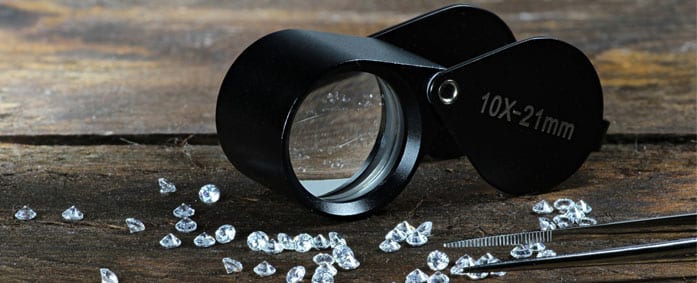
Westworld, the new HBO series, is seizing the attention of today’s viewers with technologically advanced hosts that look and act like real people, but are actually lab created fakes. The boundaries of what is real vs what is fake are being tested in very new and cutting-edge ways.
Similarly, within the diamond world, the same question exists: Is this a real diamond or a technology advanced fake?
A real diamond, as defined by the Oxford English Dictionary, is: a precious stone consisting of a clear and colorless crystalline form of pure carbon, the hardest naturally occurring substance.
Many diamond-like stones are being sold in the marketplace, these stones may be look-alikes or are being man-made, lab created and manufactured, and it gets harder and harder to know what is a real diamond. How do you know if what you are seeing is considered a real diamond or a fake diamond engineered to look like a real diamond?
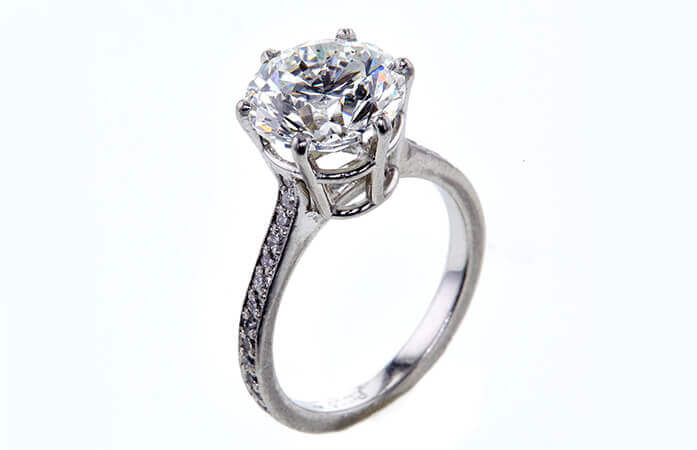
Worthy wanted to learn the true facts and understand if it was possible for an individual to identify a real naturally occurring diamond vs. a “fake” diamond. Is it visible to the naked eye to see the difference yourself?
The Gemological Institute of America (GIA), the leading source for identifying diamonds, helps answers our questions and gives us sound advice along the way.
1. WORTHY: Are synthetic diamonds considered fake?
GIA: In gemological terms, a diamond is a diamond whether it was mined from the ground or grown in a laboratory. Natural diamonds and synthetic diamonds are chemically, optically and physically the same, and are made up of a single element: carbon. Natural diamonds, considered by many as Earth’s little treasures, are formed under tremendous heat and pressure deep within the Earth over millions and perhaps billions of years. Synthetic diamonds (also known as lab-grown and man-made diamonds) are produced in a laboratory over the course of days or weeks.
2. WORTHY: Can you tell the difference between a man-made, lab grown diamond and a real natural diamond?
GIA: GIA can identify all known synthetic diamonds on the market today. The Institute has been researching synthetic diamonds since they were first created more than 60 years ago.
Every diamond submitted to GIA for grading is screened to determine if it is natural or possibly synthetic or treated. Following the initial screening, any diamond that is flagged as potentially synthetic or treated undergoes rigorous examination to confirm if it is natural or synthetic, and what treatments – if any – have been applied.
Since there’s no way for a consumer to see the differences between a natural and synthetic diamond, it’s important to have a diamond grading report from an independent laboratory like GIA to ensure they are getting the gem they expect.
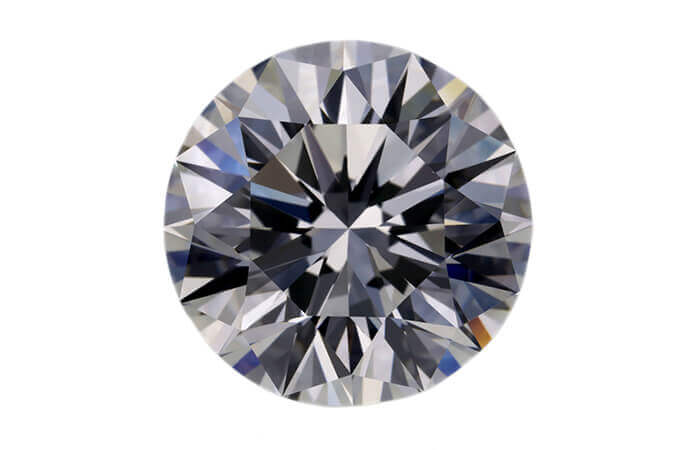
3. WORTHY: What are diamond simulants and how are they different than natural diamond?
GIA: In the jewelry trade, diamond “look-a-likes” are known as simulants or imitations, and can be either natural or manmade. Diamond simulants are different materials from natural and synthetic diamond. Because they differ in their chemistry and atomic structure they have quite different optical and physical properties. These differences allow them to be detected by a competent gemologist relatively easily. A few examples of diamond simulants are:
You can learn more about diamond and other gem simulants on GIA’s website.
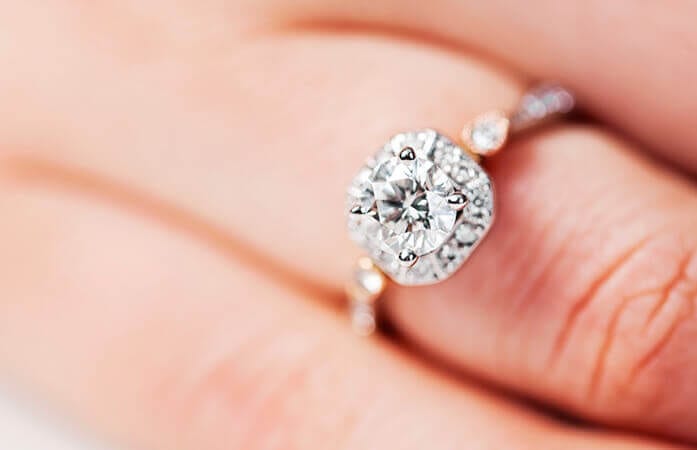
4. WORTHY: If my colorless stone can scratch glass, does that mean I have a real diamond? Does a scratch test on glass work?
GIA: There’s no shortage of advice on how to tell if a diamond is real, yet much of this information is wrong, and some methods can even damage your gem. The most reliable way to authenticate your diamond is to consult a trained gemologist or send it to an independent gemological laboratory for analysis. A lab, like GIA, will have the expertise and instrumentation to distinguish between natural diamonds, diamond simulants (or imitations), and synthetic diamonds, and to detect diamond treatments.
As mentioned earlier, synthetic diamonds are man-made and have the same physical properties as natural diamonds. Synthetic diamonds are diamonds. You cannot spot a synthetic diamond by looking at it through a loupe. The only way to tell is by laboratory testing.
If your diamond already has a GIA diamond report, like a GIA Diamond Grading Report or GIA Diamond Dossier®, you know you have a natural diamond. The reports not only identify the diamond, they also provide an unbiased assessment of your diamond’s quality according to the 4Cs: color, clarity, cut and carat weight. The reports also disclose any treatments the diamond may have undergone to improve its color appearance or clarity.
5. WORTHY: How hard are diamonds? Are diamond simulants as hard as real diamonds?
GIA: Diamonds are the hardest material on earth, 58 times harder than anything else in nature. Only a diamond can scratch a diamond.
6. WORTHY: If my diamond is chipped, does that mean it’s not really a diamond? Are diamonds unbreakable?
GIA: Any stone, including a diamond, will break if it’s hit hard enough in the right place. Toughness is a measure of how well a gem can survive an impact and resist breaking, chipping or cracking. Diamonds are tougher in the directions where the atoms are bonded tightly together, less tough where they’re not so tightly bonded.
The weakest directions are the ones where the atoms are farthest apart. It’s easier to break a diamond in those directions, which are called cleavage directions. A cutter can cleave a diamond by hitting it sharply in the cleavage direction. But even after cutting, a hard blow can still cleave a diamond. This can happen during the setting process, or even when it’s being worn.
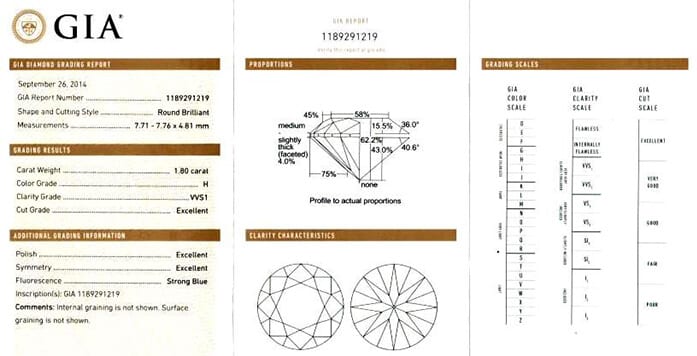
7. WORTHY: Is clarity described differently on natural diamond grading reports and synthetic diamond grading reports?
GIA: A diamond’s relative lack of “imperfections,” known as “clarity characteristics,” determine the gem’s clarity. Clarity characteristics located on the surface of the diamond are called blemishes. Those inside the diamond are called inclusions. The diamond’s clarity is determined by the number of inclusions, the size of the inclusion in relation to the size of the diamond, location, relief (how easy it is to see it) and nature (the type of characteristic and its inherent effect on the diamond). All of these factors relate to each other when determining a clarity grade.
In natural diamonds, clarity is measured using a scale of 11 grades that range from Flawless (no inclusions or blemishes are visible to a skilled diamond grader using 10× magnification) to Included (inclusions are obvious without magnification and may affect a diamond’s transparency, brilliance or durability).
GIA presents clarity information for synthetic diamonds differently. The GIA Synthetic Clarity Scale uses descriptions rather than grades for synthetic diamonds in the Very, Very Slightly Included to Included ranges.
8. WORTHY: Does a diamond reflect light differently than a diamond simulant like CZ or Moissanite™? Can the human eye see this?
GIA: While some consumers may be able to distinguish a diamond simulant from a diamond with the naked eye just by the way it reflects light, it’s important to always work with a professional jeweler to determine your gem’s authenticity.
The way a diamond reflects light is one of the attributes that many consumers cherish about the stone. If you’ve ever wondered why your diamond looks different in sunlight versus candlelight or daylight versus office lights, it’s because the cut of your diamond responds differently depending on the light and the environment you are in. How – and where – you look at your diamond can greatly change its appearance.
When it comes to round brilliant cut diamonds, the most popular shape of diamond for engagement rings today, look for brightness (often called brilliance) – the effect of all the diamond’s internal and external reflections of white light. This is best observed under diffused lighting. Well-cut diamonds are brighter than poorly fashioned ones, even if they’re of equivalent size, color and clarity. Poor polish and symmetry causes brightness and fire to diminish.
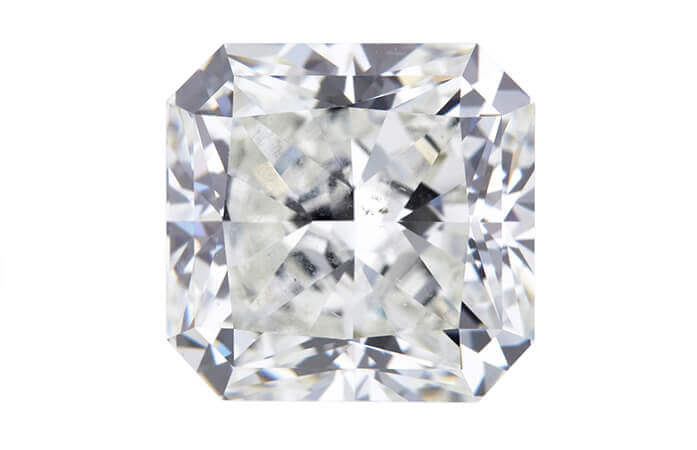
9. WORTHY: Are color and clarity enhanced diamonds considered real diamonds?
GIA: Yes. A treatment is any process used to improve the apparent color and/or clarity of a diamond. Treatments (often called enhancements) can be permanent (like HPHT process) or unstable (like fracture filling). As part of its grading process, GIA tests all diamonds for treatments. If a diamond is treated, the treatment is disclosed on the grading report.
“Clarity enhanced” is a broad term used to describe a diamond that has had its clarity altered by the use of laser drilling or fracture filling.
A treatment known as HPHT (High Pressure/High Temperature can alter the color of some diamonds.
“The enhanced diamond resell market” as stated by Roy Albers, Chief Gemologist Worthy, “is different from the natural diamond market and has its unique set of buyers and pricing. Worthy, working with GIA will be able to identify and will disclose all treatments to its clients, so the sellers know exactly the diamond they have.”
©2011-2025 Worthy, Inc. All rights reserved.
Worthy, Inc. operates from 25 West 45th St., 2nd Floor, New York, NY 10036